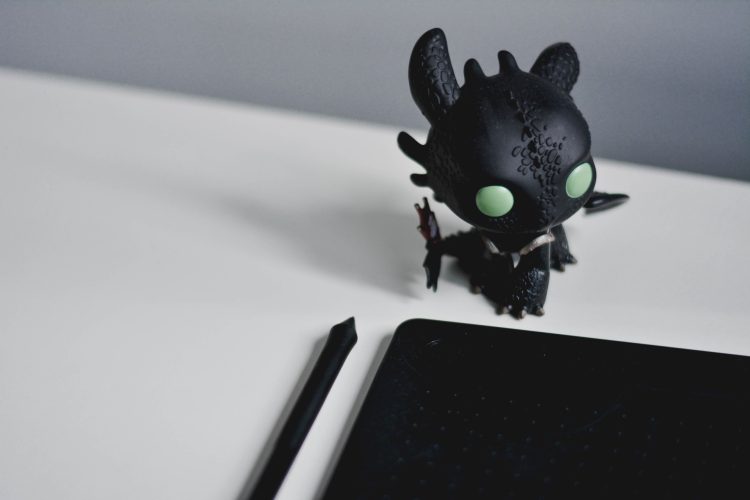What can come from a simple promotional X post? The Wacom AI art scandal was born out of this very carelessness and oh boy, the backlash has been huge.
Wacom, the industry leader in digital art tablets, set the internet ablaze with a seemingly innocuous New Year’s sale post. What started as a festive promotion quickly morphed into a full-blown scandal, exposing a rift between the tech giant and its core audience: artists. The controversy dubbed the “Wacom AI art scandal,” ignited a firestorm of debate around the ethics and future of AI in the creative industry.
Two promotional images, depicting fantastical dragons, were posted on Wacom’s social media channels. Sharp-eyed artists, accustomed to the nuances of digital creation, noticed inconsistencies and telltale signs that pointed toward AI generation. From anatomical oddities to lighting flaws, the artwork lacked the human touch that defines hand-drawn masterpieces.
Although the Wacom AI art scandal was quickly covered up by the company, user @meganroseruiz on X managed to take a few screenshots before the posts were deleted and published the following post:
The deleted posts: pic.twitter.com/2luJPmeR2c
— Meg (they)@WonderCon (@meganroseruiz) January 6, 2024
How did users find out about the Wacom AI art scandal?
The Wacom AI art scandal unfolded like a detective story, with eagle-eyed artists piecing together clues hidden within the seemingly fantastical promotional images. Here’s how it went down:
Wacom’s festive New Year’s sale post featured two AI-generated dragon illustrations, posted across their social media channels. While the casual observer might have admired the dragons’ fantastical scales and fiery breath, seasoned artists noticed something was off.
It all started with subtle inconsistencies. The tail of one dragon appeared disconnected, its right hand contorted in an anatomically impossible manner. Others pointed to strange lighting effects, mismatched horns, and scales rendered with an unnatural “gradient” texture. These oddities, familiar to artists who spend countless hours honing their skills, became the first whispers of doubt.
As the discussion gained momentum, the focus shifted to the dragons’ eyes. Trained eyes noticed a lack of depth, a vacant stare that spoke of algorithms rather than the soul of an artist. This detail struck a chord, resonating with the essence of artistic expression that transcends technical perfection.
But the clincher came from within the dragons’ mouths. One user, with a sharp eye for detail, pointed out the nonsensical jumble of teeth and flesh, a chaotic jumble that no human hand could create with deliberate intent. This final piece of evidence cemented the case – AI was at play, and it hadn’t quite mastered the intricacies of anatomy or artistic nuance at the Wacom AI art scandal case.
With each observation, the chorus of outrage grew louder. Wacom’s initial attempts at defense, claiming “mixed media” approaches, only fueled the fire. The evidence was overwhelming, and the court of public opinion had spoken.

What is Wacom?
Let’s talk about why the Wacom AI art scandal is such a big deal. Wacom is a Japanese company specializing in the development and manufacturing of graphic tablets and related products. They are the industry leader in digital art tablets, used by countless professionals and hobbyists for tasks like:
- Digital painting and drawing: Wacom tablets allow artists to create digital artwork with the same expressive range and control as traditional pen and paper, making them essential tools for illustrators, comic book artists, and concept artists
- Photo editing and retouching: Wacom tablets offer precise pressure sensitivity and control, making them ideal for photographers and other professionals who need to manipulate images with finesse
- 3D modeling and animation: Wacom tablets provide a natural and intuitive way to sculpt and animate digital models, making them invaluable for 3D artists and animators
- Digital signature capture: Wacom offers a range of tablets designed specifically for capturing signatures electronically, ideal for businesses and organizations that need to handle documents digitally
Wacom’s vision and mission is clear, and it’s also clear why the Wacom AI art scandal has caused such a backlash. There is a serious dilemma if the company, which tries to ensure that art exists organically intertwined with technology, promotes its product using AI art.
Although AI has made many things easier today, art is organic. Wacom, were your eyes and ears closed when everyone was saying “Hollywood is awful“?
Featured image credit: Content Pixie/Unsplash.





